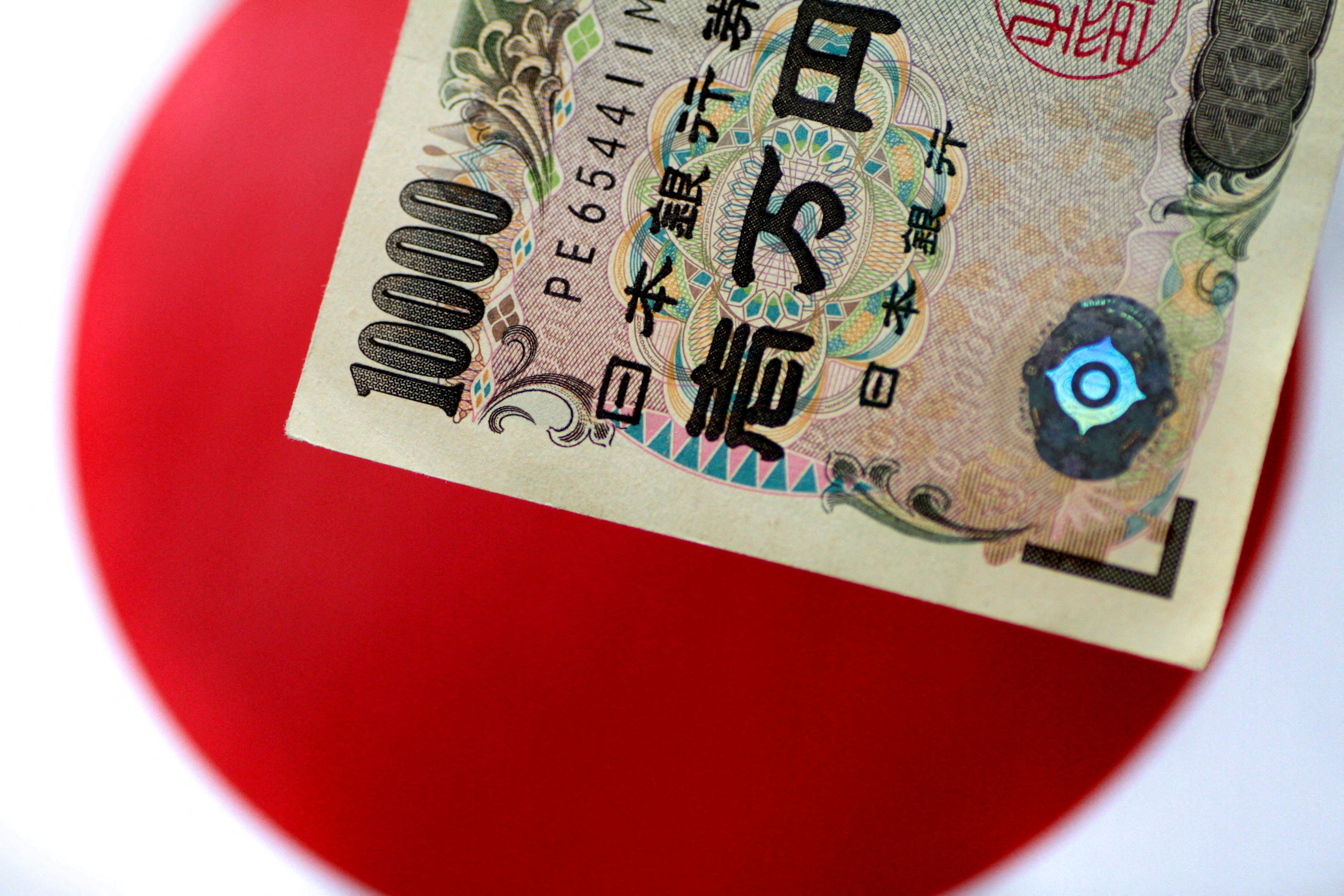 © Reuters. FILE PHOTO: A Japan yen note is seen in this illustration photo taken June 1, 2017. REUTERS/Thomas White/Illustration/
© Reuters. FILE PHOTO: A Japan yen note is seen in this illustration photo taken June 1, 2017. REUTERS/Thomas White/Illustration/
LONDON (Reuters) - The Japanese yen this week fell to levels against the U.S. dollar last seen in early 2002.
The scale of the move has repercussions for the domestic economy as yen-based import prices are surging at a record annual pace, heaping pressure on household balance sheets.
The Bank of Japan and the Japanese government on Friday gave a rare joint statement that they may intervene if weakness persists.
So far the fallout from the weakening yen has been minimal for broader financial markets, but that could change if the sell-off accelerates.
Below are key questions about what a sliding yen means for Japan's economy and international markets:
WHY IS THE YEN WEAK?
The yen, the third most-traded currency globally, is now near 134 per dollar after starting 2022 at 115. With the dollar up 16% so far this year, the yen is on track for its biggest annual drop since 2013.
The weakness primarily stems from widening interest rate differentials between Japan and elsewhere.
While the rest of the world, led by the U.S. Federal Reserve, is raising rates aggressively to tame soaring inflation, the BOJ has doubled down on its easy policy stance.
The gap between Japanese 10-year government bond yields and those in the United States is 279 basis points -- a near 3-1/2-year high -- while the gap with German yields is at 8-year highs.
WILL AUTHORITIES INTERVENE?
They certainly say they might.
On Friday, Japan's government and central bank said they were concerned by the recent sharp falls, the strongest warning to date that Tokyo could intervene.
The yen quickly bounced away from its two-decade lows, but not everyone is convinced actual intervention is likely.
Given the economy's reliance on exports, Japan has historically focused on arresting sharp yen rises and taken a hands-off approach to yen weakness, which is more difficult because yen-buying requires Japan to draw on limited foreign reserves.
The last time Japan intervened to support its currency was 1998, when the Asian financial crisis triggered rapid capital outflows from the region. Before that, Tokyo intervened to counter yen falls in 1991-1992.
Currency intervention is costly and could easily fail given the difficulty of influencing the yen's value in global foreign exchange markets.
WHAT CAN STOP THE DECLINE?
A marked improvement in growth prospects as the country reopens its borders post-COVID and higher inflation could alter the BOJ's dovish stance.
Japan's core consumer prices in April were 2.1% higher than a year earlier, exceeding the BOJ's 2% inflation target for the first time in seven years.
"The yen's fall could stop if the BOJ changes tack and becomes hawkish," said Francesca Fornasari, head of currency solutions at Insight Investments.
Any sign that rates outside of Japan are peaking might also prompt a relief rally. There are no signs of that yet though, with U.S. rates set to peak at 3.5% in mid-2023, according to futures markets.
DOES A WEAKER YEN BOOST THE ECONOMY?
The yen has weakened back towards recent 7-year lows versus the Chinese yuan and is hitting new multi-year lows against the Korean won and the Taiwanese dollar, which should provide some relief for Japan's widening trade deficit.
Some like John Vail, chief global strategist at Nikko Asset Management, say currency weakness is crucial for Japan's economy to maintain its competitiveness as a secure source of supply-chain diversification.
The yen's decline also boosts the attractiveness of its stock market among foreign investors who consider it undervalued versus European and U.S. markets. Japanese stocks have outperformed rivals in 2022, although they are still down as investors globally dump riskier assets.
WHAT DOES IT MEAN FOR FX MARKETS?
The yen has long been the currency of choice for investors undertaking so-called carry trades, which involve borrowing in a low-yielding currency like the yen to invest in higher yielding currencies like U.S. or Canadian dollars.
A strategy borrowing in yen and investing in an equal basket of U.S., Australian and Canadian dollars would have yielded 13% so far in 2022, according to Refinitiv data.
But the speed of the yen's drop and questions about policymaker intervention is fuelling unease among investors, especially with short bets against the yen near six-month highs.
Further volatility and weakness could undermine its appeal as a funding currency.
WHAT ABOUT DOMESTIC INVESTORS?
The yen's weakness puts Japanese investors in a bind.
Yields are high and rising, which makes foreign bonds much more attractive. But that also means the cost of FX hedging is climbing.
So Japanese investors can often only capture the higher yields if they buy foreign bonds unhedged.
But with the yen at such depressed levels it is difficult for investors to stomach such currency risk, such as the yen appreciating. Even a modest move back to 115-120, where we were 4 months ago, would eat up years worth of yield advantage.

